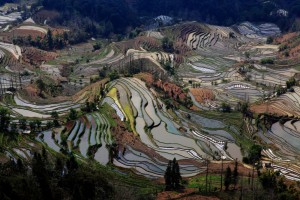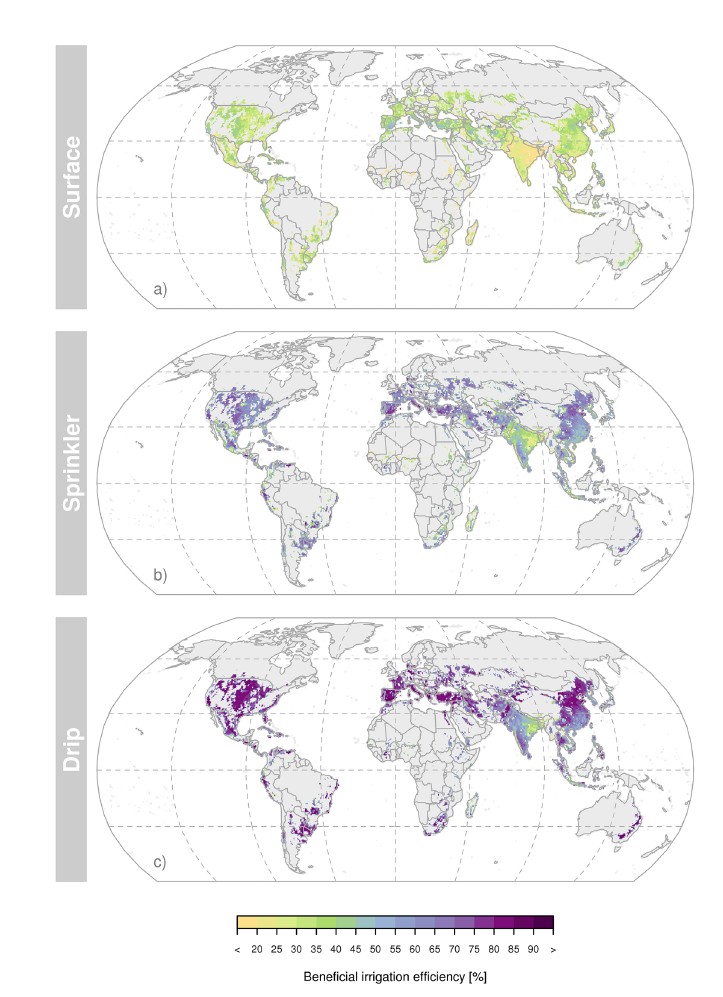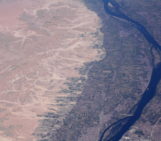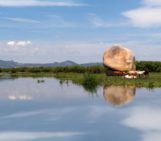
Supplies of water on Earth are running dry. The rate at which an ever growing population consumes this precious resource is not matched by our Planet’s ability to replenish it. Water scarcity is proving a problem globally, with regions such as California and Brazil facing some of the most severe water shortages on record. Used for drinking, agriculture and industrial processes, water forms an fundamental part of our day to day life, so finding ways in which to preserve this vital resource is important.
The global population now exceeds 7.3 billion people. One of the greatest challenges of the 21st century will be to feed this ever growing population – by 2050 crop production will have to double to meet demand. At the same time, agricultural irrigation currently accounts for approximately 80-90% of global freshwater consumption, while agricultural areas requiring irrigation in the past 50 years having roughly doubled. With both space and freshwater in short supply, innovative solutions and fresh approaches will be need if the increase in crop demand is to be met.

The fields in the image are farmed on seemingly vertical hillsides. Terraced fields are present nearly to the top of every available mountain, and ploughed by hand or with a draft animal. Terraces, by Cheng Su, distributed via imaggeo.
It might come as a bit of a surprise that current irrigations systems operate at efficiency of 50% or below. Water is wasted as it is transported to the crops as well as whilst it is applied to the plants and is affected, not only by the irrigation system itself, but also meteorological and environmental factors. A recent paper published in the open access, EGU Journal, Hydrology and Earth System Sciences, has found that improving current irrigation practices can contribute to sustainable food security.
To better understand where efficiencies might be made in irrigation systems, the scientists used a new approach: They took into account ‘manageable’ factors such as water lost through evaporation, run-off, deep percolation and that taken on by weeds. At the same time, assessing mechanical performance of the systems and the vegetation dynamics, climate, soils and land use properties of a particular region. These factors were fed into a global irrigation model implemented on the three main irrigation types: surface, sprinkler and drip.
The researchers created maps of the global distribution of irrigation systems at a country level, based on the results from their model. The maps showed that areas where surface irrigation – were water is distributed over the surface of a field – is common, irrigation system efficiency was low, sometimes registering values of less than 30%! This is particularly applicable to Central, south and Southeast Asia due to the widespread cultivation of rice. In contrast, areas where there is a high usage of sprinkler systems – similar to natural rainfall – and drip systems (were water is allowed to drip slowly to the root of the plant), such as North America, Brazil, South Africa, Ivory Coast and Europe, efficiency was above the global average.

Global patterns of beneficial irrigation efficiency for each irrigation system (a) surface, (b) sprinkler, and (c) drip. This figure is based on theoretical scenarios, in which each system is respectively assumed to be applied on the entire irrigated area. From Jägermeyr et al., 2015. Click to enlarge.
To investigate how the three irrigation system types compared to one another, irrespective of their geographical distribution, the researchers produced another map. They found that surface irrigation is the least efficient of the three methods, with values at less than 29%. Sprinkler and drip systems perform significantly better, with values of 51 and 70%, respectively. Interestingly, regardless of the system used, irrigation efficiency in Pakistan, northeast India and Bangladesh is always at below global average values. Crop type can also play an important role: rice, pules and rapeseed are linked to poor system efficiencies, whilst, maize sugarcane and root crops (such as potatoes) are above average.
Jägermeyr, the study’s lead author, and his team calculated that 2469km³ of water is withdrawn yearly for irrigation purposes – that is close to 5 times the volume of water held in the Canadian/American Lake Erie. Of that, 608 km³ is non-beneficially consumed. In other words, lost through evaporation, interception (by foliage leaves) and during delivery to the plants and represents an area where substantial water savings could be made.
Replacing surface irrigation with a sprinkler or drip system proves one of the best solutions to the problem, with a potential 76% reduction in non-beneficial consumption of water. This would mean that up to 68% less water would be needed for the purposes of irrigating crops.
Therefore, irrigation system improvements could make an important contribution to sustainably increase food production. The water saved would allow for irrigated areas to be expanded and yields increased on farms where production is currently limited by an insufficient water supply.
The upgrade of irrigations systems seems a very attractive solution to the problem, but the researchers warn that its suitability must be assessed on a river basin level. Factors such as crop management, soil type and local climate may affect the suitability of this approach in some geographical areas. The study finds that regions such as the Sahel, Korea and Madagascar, as well as temperate regions in Europe, North America, Brazil and parts of China would benefit the most from irrigation system improvements.
By Laura Roberts Artal, EGU Communications Officer.
References
Jägermeyr, J., Gerten, D., Heinke, J., Schaphoff, S., Kummu, M., and Lucht, W.: Water savings potentials of irrigation systems: global simulation of processes and linkages, Hydrol. Earth Syst. Sci., 19, 3073-3091, doi:10.5194/hess-19-3073-2015, 2015.
Gleick, P.H., Christian-Smith, j., Cooley, H.: Water-use efficiency and productivity: rethinking the basin approach, Water International, 36, 7, doi: 10.1080/02508060.2011.631873, 2011.
Tilman, D., Blazer, C., Hill, J., Befort, B.L.: Global food demand and the sustainable intensification of agriculture, PNAS 108, (50), 20260-20264, doi:10.1073/pnas.1116437108, 2011.


